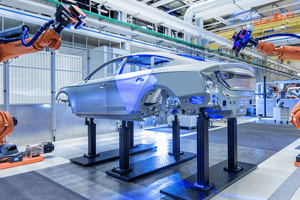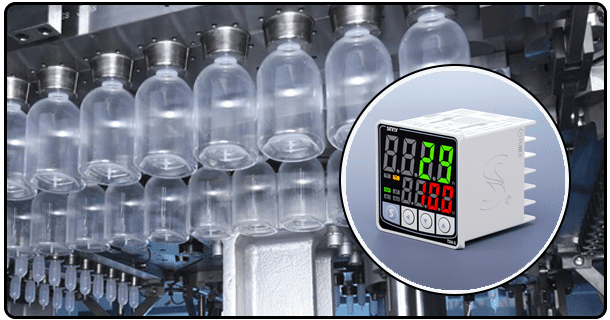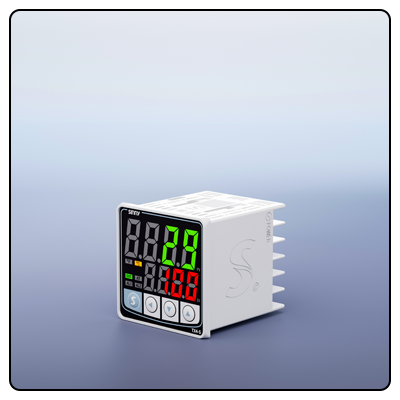Temperature PID Controller Manual: Installation, Features & Programming Guide
Explore a complete guide to temperature PID controls. Discover features, applications, installation and programming. "Improve efficiency by using precise temperature control.
1. The following is a brief introduction to the topic:
Modern industrial and household environments require temperature PID controllers. PID controllers, which stand for Proportional-Integral-Derivative controllers, are designed to maintain precise temperature control in various applications, ranging from manufacturing processes to home brewing systems. This guide is a comprehensive manual for understanding, installing and using temperature PID controls.
PID controllers reduce costs, improve product quality and optimize energy use by maintaining constant temperatures. This guide will provide you with clear and useful instructions, whether you are a professional or hobbyist.
2. Features and Specifications
The features of temperature PID controllers make them essential for temperature regulation. These include some of the most important features:
High Accuracy Maintains temperatures to +-0.1degC or less in many cases.
Control modes that can be customized: Switch between manual, automatic and hybrid mode.
Multiple Inputs is compatible with thermocouples (thermocouples), resistance temperature detectors(RTDs) and analog inputs.
Modes of Output offers relay outputs as well as voltage and current outputs to integrate seamlessly with other systems.
A glance at specifications
Input: Universal
SSR output: Solid State Relay, relay or current
Temperature range: from -50degC up to 1300degC depending on the sensor
Power supply: 85-260V AC or DC
The features and specifications of these PID controllers demonstrate their versatility and reliability in a variety of settings.
3. Installation Guide
Safety precautions
To avoid electrical hazards, disconnect the power before beginning any installation. Follow local safety laws and use the appropriate tools.
Step-by-Step Installation
Installing the Controller: Mount the PID Controller on the DIN Rail or Panel, according to the Product Manual.
Connect Power Supply: Check the wiring diagram to ensure the correct voltage input.
Connect Sensors : Attach the sensors to the terminals. Make sure the polarity is correct.
Wiring Output: Attach the output terminals of the device to be connected, for example, a motor, relay or heater.
Sensor connections and Wiring Diagram
Every PID controller is equipped with its own wiring diagram. To avoid mistakes, carefully follow the diagram provided. To prevent problems, ensure that all connections are securely fastened.
4. Programing and Operations
It is important to understand the operating and programming modes of the controller in order to maximize its efficiency. How to get started:
Control modes
Auto Mode The controller automatically adjusts the parameters to maintain a setpoint.
Manual mode: User controls output manually. Ideal for custom settings or testing.
Set Parameters
Setpoints : You can adjust the temperature desired using either the front panel of the software.
PID values: Optimize performance by tuning proportional, integral and derivative values.
Alarms Configure alarms for high and low levels to maintain safety.
Common Problems
Temperature oscillations Check the PID settings, and re-calibrate as necessary.
Sensor errors: Check sensor connections, and replace any faulty parts.
5. Maintenance and warranty
Follow these tips to maintain your PID temperature controller.
Clean the dust off of your controller and inspect it regularly.
Check sensor calibration on a regular basis.
Expose the controller only to conditions that are comfortable.
Typically, the warranty terms will be included with your product. Keep the receipt for the product and contact the maker if there are any problems.
6. Apps
Different industries have different applications for temperature PID controllers:
Food & Beverage : precision cooking, brewing and fermentation.
Pharmaceuticals: Ensures stringent temperature control in drug production.
Production: Controls temperature in metal, plastic, and welding processes.
Home Automation : Manages HVAC systems and water heaters.
Using PID controllers can improve the efficiency of industries and their product quality.
7. FAQs
PID controllers are a type of electronic device that controls the temperature.
The PID control regulates the temperature using three different strategies: integral, proportional and derivative.
Can I Use a PID Controller at Home?
The PID controllers can be found in many DIY home projects and systems for smart homes.
What is the process for calibrating a PID controller?
Use the calibration software or the procedure provided by the manufacturer to adjust the settings.
8. The conclusion of the article is:
PID temperature controllers can be used to regulate temperatures precisely. They are multi-functional and essential tools. Understanding their installation and use will allow you to fully utilize their abilities. This manual will help you use PID controls effectively, whether you are an industry expert or an enthusiast.
Contact the manufacturer for further information or to consult other resources.
- How to tune a PID temperature controller: A Step by Step guide
- Comprehensive guide to PID temperature controllers: components, design, and applications























